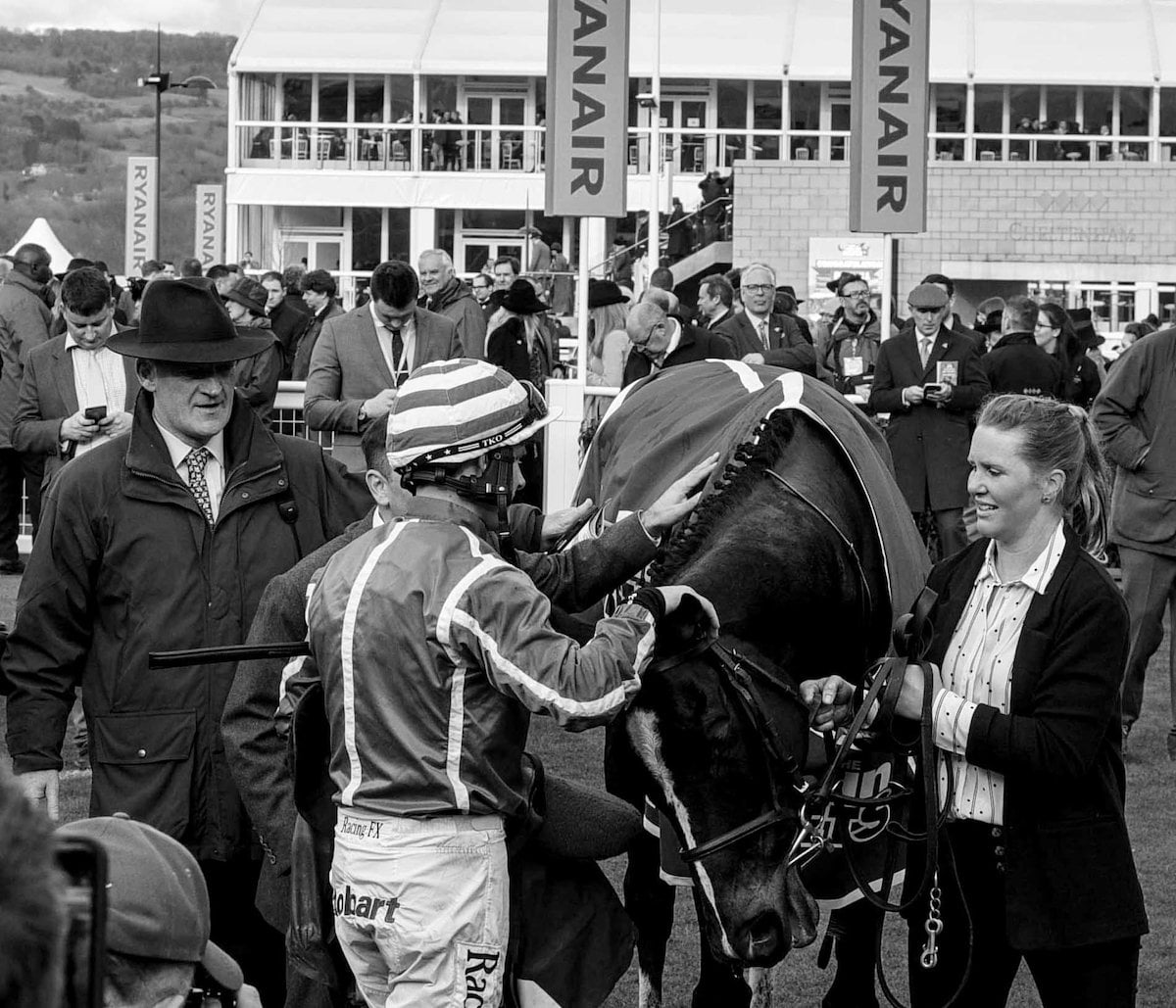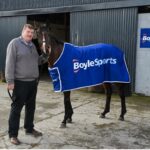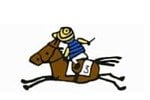[et_pb_section admin_label=”section”][et_pb_row admin_label=”row”][et_pb_column type=”4_4″][et_pb_text admin_label=”Text” background_layout=”light” text_orientation=”left” use_border_color=”off” border_color=”#ffffff” border_style=”solid”]
The National Hunt Chase has been run more times than any other race at The Festival.
Until the 1930s, only the Grand National was more important than the National Hunt Chase in the Jump calendar. The race had been run at a number of venues until it became a part of the new two-day National Hunt Festival at Cheltenham in 1911. It had also been run at Cheltenham in 1904 and 1905.
The race has not taken place twice since 1946 – in 1975 the course was waterlogged, while in 2001 the foot and mouth epidemic caused the abandonment.
The 4-mile National Hunt Chase is the longest race run at The Festival. The distance was reduced in distance by a furlong in 2008 and reverted back to the Old Course. The 2008 race was run as the Peter O’Sullevan National Hunt Chase to celebrate the legendary commentator’s 90th birthday and in 2012 honoured the Diamond Jubilee of Queen Elizabeth II.
In 2013 it was run as the John Oaksey National Hunt Chase in honour of the late Lord John Oaksey, who died at the age of 82 in September, 2012.
In over 50 years of professional involvement in racing, John Oaksey earned the admiration of everyone he came into contact with. He was twice champion amateur rider over jumps, an outstanding writer on all aspects of racing and a highly successful pundit on television. He also left an enduring legacy to racing with the establishment of what is now known as the Injured Jockeys’ Fund.
In latter years, he enjoyed significant success as an owner with his home-bred Carruthers, who won the 2011 Hennessy Gold Cup at Newbury and also finished fourth in the 2010 Betfred Cheltenham Gold Cup. As a jockey at The Festival, John rode four winners including taking the 1959 National Hunt Chase on Sabaria.
This year, 2017, the race has been renamed the JT McNamara National Hunt Steeple Chase, in memory of JT McNamara, a former jockey who died in July 2016 at the age of 41.
BIGGEST FIELD
The biggest post-war field size was 37 (1948) and the smallest 13 (1993). There is now a safety limit of 20 runners.
MOST SUCCESSFUL OWNER
JP McManus is the most successful owner with four wins – Bit Of A Skite (1983), Front Line (1995), Rith Dubh (2002) and Butler’s Cabin (2007).
MOST SUCCESSFUL TRAINER
Jonjo O’Neill with five wins is the most successful trainer since 1946 – Front Line (1995), Rith Dubh (2002), Sudden Shock (2003), Native Emperor (2004) and Butler’s Cabin (2007).
MOST SUCCESSFUL JOCKEY
Nine jockeys have each ridden two winners of the National Hunt Chase since 1946 and they are the race’s most successful – Bunny Cox, Dermot Daly, George Small, JT McNamara, John Fowler, Marcus Armytage, John Fowler, Tony Martin and Willie Mullins.
BETTING
The biggest shocks were provided by Topsham Bay (1990) and Another Rum (2005), both 40/1 shots.
Castledermot, 6/4 favourite in 1949, is the shortest-priced victor among 15 market leaders in 65 post-war runnings (23 per cent).
AGE
The oldest winners in the post-war period are the 11-year-olds Prattler (1946), Red Vale (1965), Waggoners Walk (1980) and Flimsy Truth (1997).
The youngest winner in the same period is the five-year-old Gay Tie (1978).

The overall breakdown by age since 1946 is as follows:
- 5yo – 1 win
- 6yo – 6 wins
- 7yo – 24 wins
- 8yo – 20 wins
- 9yo – 6 wins
- 10yo – 4 wins
- 11yo – 4 wins
RECORD TIME
Flimsy Truth, a 33/1 chance, set a record post-war time of 8 mins 11.09s in 1998, but that was beaten by Relaxation, who scored in 8 mins 0.60s in 2000.
OVERSEAS-TRAINED WINNERS
IRELAND (15): Castledermot (1949); Pontage (1953), Quare Times (1954); Dorimont (1964); Mr Midland (1974); Gay Tie (1978); Artic Ale (1979); Hazy Dawn (1982); Bit Of A Skite (1983); Macks Friendly (1984); Omerta (1986); Loving Around (1996); Deejaydee (1999); Another Rum (2005); Chicago Grey (2011).
DID YOU KNOW?
The race has proved a good guide to future success in recent seasons. The 2007 winner Butler’s Cabin subsequently won the Irish Grand National, while 2006 victor Hot Weld landed a memorable double in 2007 by collecting the Scottish National and the Sandown Gold Cup in the space of a week.
The 2007 John Smith’s Grand National victor Silver Birch finished fourth in 2004. The 2009 winner Tricky Trickster took the Grade Two AON Chase at Newbury the following year. The 2011 runner-up, Beshabar, went on to win the Scottish National at Ayr a month later.
Katie Walsh, whose father Ted and brother Ruby had both enjoyed great success at The Festival, joined an elite group of female riders to have won at Jump racing’s biggest meeting when riding Poker De Sivola to beat her best friend Nina Carberry in the 2010 race on Becauseicouldntsee.
[/et_pb_text][et_pb_text admin_label=”Text” global_module=”24436″ saved_tabs=”all” background_layout=”light” text_orientation=”left” use_border_color=”off” border_color=”#ffffff” border_style=”solid”]
RETURN TO THE GUIDE TO THE CHELTENHAM FESTIVAL >>>
[/et_pb_text][/et_pb_column][/et_pb_row][/et_pb_section]
Sarah Elsley is a freelance editor and proofreader who is the Junior News Editor for Eclipse magazine. She has a degree in English Literature and is a keen horse rider with an interest in fashion at the races and fiction writing.







